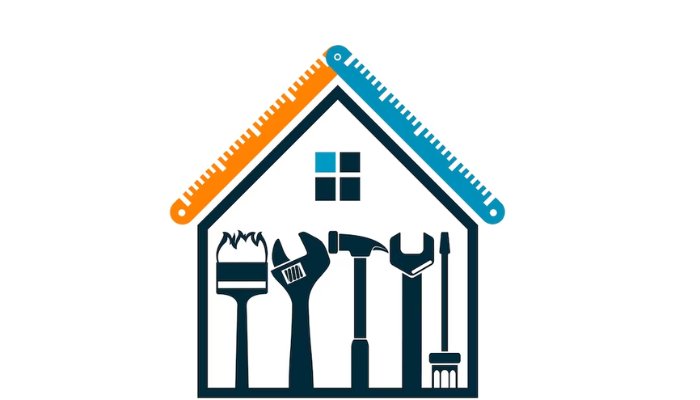When it comes to renovating your home, financing is often a crucial consideration. Home improvement loans provide a solution that can make your dream renovations a reality without financial strain.
Types of home improvement loans
Home improvement loans come in various forms, each suited for different financial needs and project scopes. Understanding these options is the first step in selecting the most appropriate loan for your project.
Personal Loans for Home Improvement
Personal loans are a popular choice for smaller renovation projects. These loans do not require collateral, making them a fast and accessible option. However, their interest rates can be higher compared to other loan types, especially if you have a lower credit score. Personal loans offer flexibility, allowing you to use the funds as needed, without strict limitations.
Home Equity Loans
Home equity loans are secured by the equity in your property. If you’ve built up significant equity, this loan can provide substantial financing at lower interest rates. A home equity loan typically comes with a fixed interest rate and a set repayment period, making it a good choice for larger projects like kitchen renovations, room additions, or structural improvements.
Home Equity Line of Credit (HELOC)
HELOCs are another option for homeowners with equity in their property. Unlike home equity loans, HELOCs function like a revolving line of credit, allowing you to withdraw funds as needed over a set period. This makes them ideal for ongoing or multiple-phase projects. However, HELOCs usually come with variable interest rates, which can fluctuate over time.
Cash-Out Refinance
Cash-out refinancing involves replacing your existing mortgage with a new one that has a higher loan amount. The difference between the two loans is given to you in cash, which you can use for home improvements. This option works well if you can secure a lower interest rate on the new mortgage, but it also extends the life of your loan, impacting long-term finances.
Government-Backed Loans
For eligible homeowners, government-backed loans like FHA 203(k) and VA home improvement loans can be great options. These loans are designed to help homeowners make necessary repairs and upgrades. They come with specific criteria and limitations but often have more favorable terms for those who qualify.
Benefits of home improvement loans
Choosing the right home improvement loan can offer several advantages, making your renovation journey smoother and more manageable.
- Affordable Financing
Home improvement loans offer affordable interest rates compared to other financing methods, like credit cards. With lower interest rates, you can fund major renovations without incurring high debt costs. This helps homeowners complete essential projects like plumbing upgrades or roof repairs without overwhelming financial pressure. - Increased Property Value
Investing in home improvements can significantly increase your property’s value. Well-planned renovations can yield a high return on investment, especially when financed through a home equity loan or a HELOC. Projects like kitchen remodels, bathroom upgrades, and energy-efficient installations often provide the most substantial value boosts. - Flexible Terms
Home improvement loans come with various repayment terms and structures, giving homeowners flexibility in how they pay off the loan. Whether you prefer a fixed monthly payment or variable payments over time, you can choose a loan structure that suits your financial capacity and preferences.
Factors to consider before applying for a home improvement loan
Before applying for a home improvement loan, it’s crucial to assess key factors to ensure that you choose the right financing option. Here are three essential considerations:
- Your Credit Score
Your credit score plays a significant role in determining your loan eligibility and interest rates. A higher credit score opens up more options with better terms, such as lower interest rates and longer repayment periods. Check your credit score before applying to understand where you stand. - Project Scope and Budget
Clearly define the scope of your renovation project and set a realistic budget. This will help you determine the amount you need to borrow and choose the most suitable loan type. Be mindful of potential unexpected costs and add a buffer to your budget to avoid financial surprises. - Repayment Capacity
Assess your current financial situation and repayment capacity. Consider how a new loan payment fits into your monthly expenses and long-term financial plans. It’s essential to avoid overextending yourself with a loan payment that could strain your finances.
How to apply for a home improvement loan
The application process for a home improvement loan varies depending on the type of loan and the lender. Here’s a step-by-step guide to help you navigate the process:
- Evaluate Your Financial Standing
Before applying, assess your credit score, existing debt, and monthly income. This self-assessment will help you identify potential issues and decide whether it’s the right time to apply for a loan. - Determine the Loan Type and Amount
Based on your project needs and financial situation, choose the most suitable loan type. Calculate the estimated project cost and determine how much you need to borrow. Remember to include additional costs like permits, materials, and labor. - Compare Lenders and Loan Offers
Research and compare different lenders to find the best terms. Look for competitive interest rates, favorable repayment terms, and additional benefits like no prepayment penalties. Online comparison tools can help streamline this process. - Prepare Your Documentation
Lenders typically require documentation like proof of income, credit history, and project details. Gather necessary paperwork before submitting your application to ensure a smooth process. - Submit Your Application
Submit your application online or in-person, depending on the lender’s process. Be prepared to answer questions about your project and financial background. Once approved, review the loan terms carefully before accepting the offer.
Common mistakes to avoid with home improvement loans
When securing financing for home improvements, it’s essential to avoid common pitfalls that could lead to financial stress. Here are three mistakes to watch out for:
- Underestimating Project Costs
One of the biggest mistakes homeowners make is underestimating the total cost of their renovation projects. Failing to account for unexpected expenses can leave you short on funds, forcing you to scramble for additional financing. Be realistic and add a contingency buffer to your budget. - Ignoring Interest Rates and Fees
While lower interest rates can make a big difference in your overall costs, don’t overlook additional fees and charges. These can include origination fees, closing costs, and prepayment penalties. Always read the fine print and calculate the total cost of the loan. - Borrowing More Than Necessary
It can be tempting to borrow more than you need for additional upgrades. However, taking on unnecessary debt can strain your finances and increase your repayment obligations. Stick to your budget and only borrow what’s required for your project.
Making the right choice for your home improvement loan
Selecting the right home improvement loan is a crucial step in your renovation journey. By understanding the different types of loans available, assessing your financial situation, and avoiding common mistakes, you can confidently move forward with your project.
Home improvement loans provide a pathway to transforming your living space, enhancing both comfort and value.
When choosing your loan, consider all factors carefully, including your credit score, project scope, and repayment capacity. With the right preparation, you can secure affordable financing and successfully complete your home improvement projects.
Investing in your home is not just about aesthetics; it’s about creating a space that meets your needs and enhances your lifestyle. By making informed choices, you can achieve your renovation goals without compromising your financial stability.





